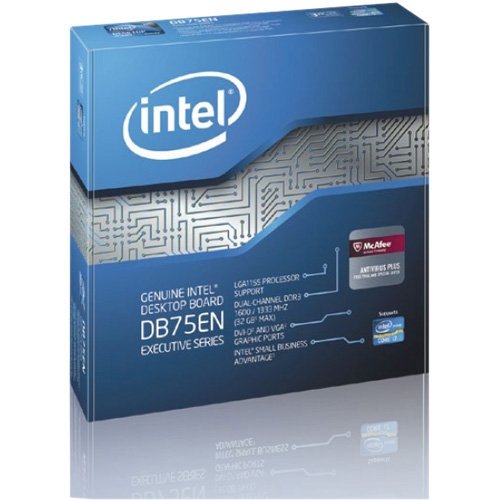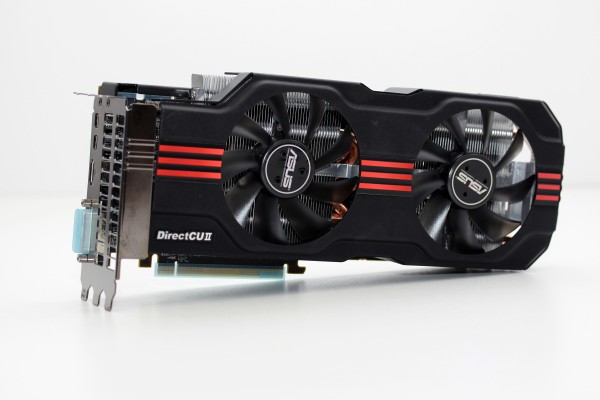Midrange System Buyer's Guide
by Zach Throckmorton on September 11, 2012 12:35 AM EST- Posted in
- Guides
- AMD
- Intel
- Ivy Bridge
- Radeon HD 7000
- NVIDIA
Developments in the Midrange Market
As with the budget segment of the DIY computer market, the midrange segment has seen many exciting new developments since the start of 2012. Perhaps the most noteworthy change is that Intel CPUs are now entirely dominant in systems that will set you back about $1,000. Ivy Bridge-based chips are now available at every price point from $100 up, leaving only the pure budget category untouched (at least until we see the Celeron IVB part). If you're interested in more information, we have a lot of information available on Ivy Bridge.
As with the latest CPUs, the newer B75 chipset has brought out of the box Ivy Bridge CPU support to less expensive motherboards, filling out the Panther Point platform. Ian thoroughly covered the Z77 chipset and compared it with H77. The B75 chipset is similar to Z77 and H77 with a few important differences for midrange buyers: two fewer USB 2.0 ports (eight vs. ten), one less SATA III port (one vs. two), and support for neither Intel RST (firmware RAID) nor SRT (SSD caching). PCIe 3.0 and 2.0 configurations are the same on B75 as they are on H77. The important point is that B75 enables less expensive motherboards that lack features that might not be important to midrange system builders, allowing money to spent on faster CPUs, GPUs, better SSDs, etc.

That said, AMD's impending launch of its Trinity APUs might very well put AMD back into the midrange market. AnandTech will be covering Trinity chips in more depth as the new APUs start hitting the mainstream desktop market over the next few months. While the parts are already shipping in OEM desktops, retail availability of the APUs has not yet occurred. For now, you can read more our current Trinity coverage.
As is often the case, the GPU market remains dynamic, with both AMD and NVIDIA wrestling for your money at multiple price points by introducing new cards and lowering prices on existing cards. We'll discuss the GPU market in more depth on the gaming rigs page.
Another development of note for midrange buyers is that prices on many of the best SSDs have been cut in half (or more!) compared to late 2011. This means that respectably-sized (i.e. 120/128GB and above) SSDs that perform very well and have great reputations for reliability are now comfortably within reach of even the lower end of the midrange budget. High capacity SSDs (i.e. those around 250GB) are also within midrange budgets; for many purposes, this means you can eschew a mechanical hard drive entirely—and either spend that money on better CPUs, GPUs, or just keep it in your wallet. Fortunately for consumers, prices on mechanical hard drives are declining in the wake of the Thailand floods, so the wallets of those with more demanding storage needs won't be hurting quite as badly as they were earlier in 2012.
Finally, case manufacturers have released many compelling choices for midrange system builders. Over the next few pages, we'll highlight new enclosures from Fractal Design, Corsair, Lian Li, NZXT, and others.
With that out of the way, let's get to the builds! We'll start with gaming machines on the next page.











95 Comments
View All Comments
Grok42 - Tuesday, September 11, 2012 - link
Wow, fantastic sub-thread. While I think TegiriNenashi didn't strike a very good tone in his first post, he still had some good points and then hit it out of the park with his 2nd post. It is absolutely ludicrous, possibly even redonkulous, that *NO* manufacture for *ANY* price offers a mATX or mITX case that fits a 9" video card without also having external 5.25" and 3.5" external bays. These front bays won't be used by many and will soon be used by no one. They completely mess up the airflow of the case and they take up room better used for internal 2.5" or 3.5" drives. Heck, a small disco ball would be more useful than a 5.25" optical drive that only holds 4GB of data. I have a USB thumb drive the size of my pinky nail that holds 32GB and costs less than a DVD drive.pattycake0147 - Tuesday, September 11, 2012 - link
Why was this guide not delayed until the impending release of GK106? Seems to me that those cards would fit in the guide perfectly.MxxCon - Saturday, September 15, 2012 - link
Or at least updated post-release.. :(It seems like Nvidia 660 significantly changed the landscape..
ExarKun333 - Tuesday, September 11, 2012 - link
Switch to a 7970 and keep both the SSD and HDD options.JarredWalton - Tuesday, September 11, 2012 - link
We mention the 7970GE as the alternative to the GTX 680 (and the stock 7970 is basically covered there). Personally, though, I'd be more inclined to go with the GTX 680 unless I was specifically running some GPGPU stuff that worked better on the 7970. There are just enough things I prefer with NVIDIA right now that I feel at the top-end that's the way to go.Anyway, it comes down to $480 for the recommended GTX 680 (with a free copy of Borderlands 2), $430 for the HD 7970GE, or $430 with a $20 MIR for a stock HD 7970. The 680 uses around 25W less power under load compared to the stock 7970, or 65W less than the 7970GE. More importantly in my book, the GTX 680 generates 5dB less noise than the stock 7970 and 10dB less than the 7970GE. Even 5dB is a big difference; 10dB is crazy.
DanNeely - Tuesday, September 11, 2012 - link
I'm surprised the upper mid range build didn't come with one of them; the extra headroom from not worrying about what to install on the SSD as often is a huge boost as games get bigger.just4U - Tuesday, September 11, 2012 - link
Hi Zack,With His RadeonHD 7870GHZ ED. IceQ sitting at 220 and 199 after rebate It's somewhat pointless to go with a 7850. I picked up one of those this weekend and it's very comparable to a GTX580.
Patflute - Tuesday, September 11, 2012 - link
Why didn't you wait a couple days for the 660 non-TiQuizzical - Tuesday, September 11, 2012 - link
An Antec Neo Eco 400C is a decent enough power supply for a low budget, low power computer. But you're going to run a Radeon HD 7950 (200 W TDP by itself) and a Core i5-3570K off of it? That strikes me as unduly risky. And then you give a stronger power supply to the workstation that won't need to deliver half as much power because it's running integrated graphics?casteve - Tuesday, September 11, 2012 - link
For everything but the 200W TDP gpu build and if you really want to spend this little on a PSU, I'd go with the Seasonic G 360W. $60 and 80+ Gold. http://www.newegg.com/Product/Product.aspx?Item=N8...